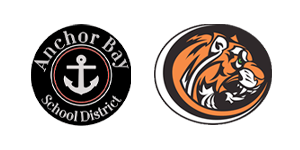- SAS案例_SAS统计软件的客户涵盖世界五百强中的知名企业 | SAS
- Anchor Bay and Armada Area School Districts

Nudging students and school districts toward unimagined success

Diagnostic and predictive insights to accelerate student learning

Data-driven decisions for students, schools and communities
Anchor Bay and Armada Area school districts achieved this using • SAS® EVAAS for K-12
Michigan’s Anchor Bay and Armada Area school districts use SAS® to encourage students and educators to dream bigger and achieve higher
In the bestselling book Nudge, Nobel Prize-winning economist Richard Thaler and legal scholar Cass Sunstein write that the way options are presented can nudge us toward better choices and overcome the decision fallacies that hold us back. Nudges are encouragements, not constraints.
Michigan’s Armada Area and Anchor Bay school districts wanted to evolve from a focus on attaining grade-level standards to nurturing individual potential by introducing students to an array of opportunities. With the expectation that if you nudge students, they just might surprise you. Show them you believe in them, and they’ll rise to the expectation.
This resonated with Phillip Jankowski, Superintendent for Anchor Bay School District in Casco, Michigan. “We cannot hold students back if they need to be challenged more, just as we can’t let students struggle if they need additional help,” Jankowski says. “We have to change that model of schools.”
Kelly Skokna, Assistant Superintendent of Curriculum and Instruction for Armada Area Schools, agrees. “We need to identify students willing to push themselves forward, and make sure we don’t constrain them,” Skokna says. She speaks from classroom experience; Skokna was 2013 Macomb County High School Teacher of the Year.
With EVAAS, you have a flashlight that can help point the way to student success. If you can get people focused on the data, they see it’s something they have the power to change, then they own it.Phillip Jankowski Superintendent Anchor Bay Schools
Growth over proficiency
Armada Area Schools needed to go beyond a reflective look at the data – what happened and how students performed in the past. The district needed diagnostic and predictive insights to help guide a better path forward.
Using SAS Education Visualization and Analytics Solution (EVAAS) for K-12 was instrumental in both school districts’ evolutions in monitoring academic growth and identifying students who could benefit from additional support, enrichment or a nudge.
“Our kids were not necessarily proficient, but if we can get them growth, we can move them forward,” Jankowski says. “With the EVAAS system, we were able to measure this; we had a way to show that we are making progress.”
“The first step is knowing where you want to go, and identifying the standards and what you want your students to know and be able to do,” Skokna adds. “Once you have that, it’s really important to use data to monitor growth and progress, and make changes as you need and as it’s warranted. We spent a lot of time monitoring the EVAAS data to get a solid understanding of where our students are, where our students need to go, and how we’re going to get them there. It’s having a conversation about learning constantly.”
Looking at the individual grade levels, the amount of growth was just remarkable. It was great to show teachers that the hard work they’re putting in every day is really paying off.Kelly Skokna Assistant Superintendent of Curriculum and Instruction Armada Area Schools
Placements no longer based on intuition or teachers’ impressions
“By examining the data, if a student who appears ready to advance is not taking higher-level classes, we invite them to move forward,” Skokna says. “We’ll offer them a seat in those higher classes to make sure they are advancing to their fullest potential.”
This transformation in learning is working. The district sees more student growth from having extra rigor and support.
“Qualifications for advanced classes were adjusted from 75th percentile to 72nd, 67th and then 65th percentile; still the students persisted and succeeded,” Jankowski says. “While 1% to 3% of eligible students opt out, those who stay see more growth. Now we have elementary school students who walk across the parking lot to take advanced classes at the middle school, and we have high school students taking college classes. That was a whole paradigm shift for everybody, but it worked.”
Not long ago, Armada Area Schools had the second-highest dropout rate in the county, close to 30%. That’s no longer the case.
“Today the school district has one of the highest graduation rates in the county,” Skokna says. “We are able to give our students so many opportunities to earn college credit while still in high school. Many of our students are already sophomores when they get to college, based on the number of credits they’ve earned, either through Advanced Placement classes or our partnership with Ferris State University.” Students who pursue trades kick-start their careers with industry certification, practical experience and some college credits.
Even though Armada Area Schools has fewer than 2,000 of Macomb County’s 120,000 students, for the last five years it’s had more students on the county’s All-Academic Team than any of the other school districts. “It is really cool to see how far we’ve come in those years,” Skokna says.
Anchor Bay and Armada Area – Facts & Figures
9 schools
in Anchor Bay
4 schools
in Armada Area
7,345 students
5,545 in Anchor Bay and 1,800 in Armada Area
Proof is in the data
“Looking at the individual grade levels, the amount of growth was just remarkable,” Skokna says. “It was great to show teachers that the hard work they’re putting in every day is really paying off. For instance, we have fifth graders who are working on sixth-grade math; they’re not being held to just what the grade-level standards are. Once they’ve mastered those standards, they’re able to move forward. Additionally, we’re extending Advanced Placement options to a much greater range of students. Monitoring the data in EVAAS confirms that those practices we’re putting in place are working for students. Some of the growth we are seeing is just phenomenal. It is so powerful and helpful to make sure all students are achieving at their greatest potential.”
Jankowski compares EVAAS reports to a credit score, a measure you need to understand and have the power to improve. “The data is there, whether you realize it or not,” he says. “Wouldn’t you rather know it, work with it and do something? Otherwise, you’re fumbling in the dark trying to guess where you are. With EVAAS, you have a flashlight that can help point the way to student success. If you can get people focused on the data, they see it’s something they have the power to change, then they own it.”
本文中所展示的成果取决于文中所述的特定场景、业务模式、数据输入和计算环境。每位SAS客户的体验都因其业务和技术特性而不同,请勿将本文观点视为通用观点。实际的成本节约、成果和效果最终取决于每位客户的实际配置和条件。SAS不保证每位客户都能取得本文类似的成果。SAS仅对SAS的产品和服务提供保证,请参阅SAS的产品服务质保条款,本文中提及的内容不能视为质保条款。客户可以按照合约商定的条款分享SAS软件实施项目的成功案例,相应的品牌和产品名称归属相应的公司所有。